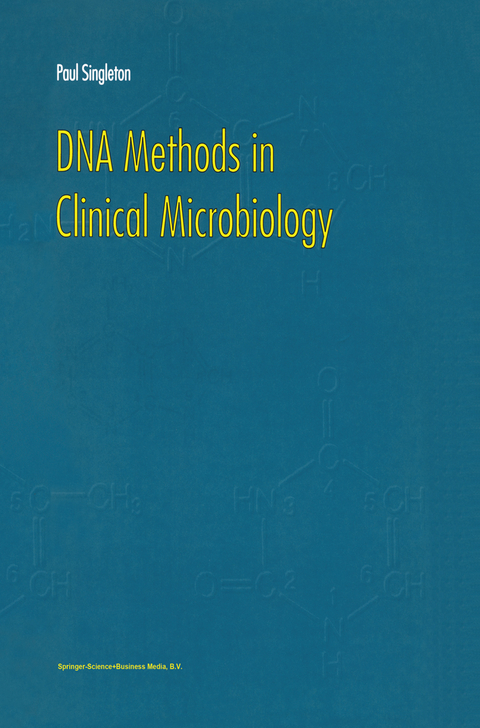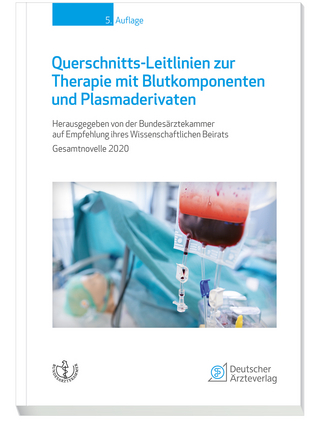
DNA Methods in Clinical Microbiology
Seiten
2010
|
Softcover reprint of hardcover 1st ed. 2000
Springer (Verlag)
978-90-481-5456-2 (ISBN)
Springer (Verlag)
978-90-481-5456-2 (ISBN)
DNA Methods in Clinical Microbiology describes the novel DNA-based technology now used in the diagnosis and management of infectious diseases. It is a concise, yet readable, overview written primarily for clinicians, clinical microbiologists, medical students and undergraduates in medical and veterinary microbiology.
The book has two primary aims. First, to explain the principles of these methods at the `molecular' level. Second, to provide a clinical perspective by reporting results from actual DNA-based investigations on a range of specimens.
Those approaching DNA methods for the first time are assisted by a brief résumé of the relevant features of nucleic acids (Chapter 2): this information is essential for an understanding of later chapters. Subsequent text covers detection, characterization and quantification of pathogens by a variety of methods - e.g., target amplification (PCR, LCR, NASBA, TMA and SDA), signal amplification (bDNA) and probe-based techniques; the chapter on typing describes nearly twenty named molecular methods, including spoligotyping and MLST. All chapters include an adequate range of current reference from which, if required, detailed protocols can be obtained. The diagrams are clear, and readers are assisted by a detailed index.
The book has two primary aims. First, to explain the principles of these methods at the `molecular' level. Second, to provide a clinical perspective by reporting results from actual DNA-based investigations on a range of specimens.
Those approaching DNA methods for the first time are assisted by a brief résumé of the relevant features of nucleic acids (Chapter 2): this information is essential for an understanding of later chapters. Subsequent text covers detection, characterization and quantification of pathogens by a variety of methods - e.g., target amplification (PCR, LCR, NASBA, TMA and SDA), signal amplification (bDNA) and probe-based techniques; the chapter on typing describes nearly twenty named molecular methods, including spoligotyping and MLST. All chapters include an adequate range of current reference from which, if required, detailed protocols can be obtained. The diagrams are clear, and readers are assisted by a detailed index.
1 DNA-based technology: an introduction.- 2 Nucleic acids: the essentials.- 3 Probe-based (hybridization) methods.- 4 Nucleic acid amplification I: polymerase chain reaction.- 5 Nucleic acid amplification II: NASBA, TMA, SDA.- 6 Nucleic acid amplification III: ligase chain reaction.- 7 Nucleic-acid-based typing.- 8 DNA-based (‘genotypic’) antibiotic susceptibility testing.- 9 Quantification of pathogens.- Appendix I The future: chip technology.- Appendix II Commercial products, systems and sources.
| Zusatzinfo | VIII, 256 p. |
|---|---|
| Verlagsort | Dordrecht |
| Sprache | englisch |
| Maße | 155 x 235 mm |
| Themenwelt | Medizin / Pharmazie ► Medizinische Fachgebiete ► Laboratoriumsmedizin |
| Medizin / Pharmazie ► Medizinische Fachgebiete ► Mikrobiologie / Infektologie / Reisemedizin | |
| Medizin / Pharmazie ► Studium | |
| Naturwissenschaften ► Biologie ► Biochemie | |
| Naturwissenschaften ► Biologie ► Mikrobiologie / Immunologie | |
| Veterinärmedizin ► Klinische Fächer ► Mikrobiologie / Immunologie | |
| ISBN-10 | 90-481-5456-1 / 9048154561 |
| ISBN-13 | 978-90-481-5456-2 / 9789048154562 |
| Zustand | Neuware |
| Haben Sie eine Frage zum Produkt? |
Mehr entdecken
aus dem Bereich
aus dem Bereich
Buch | Softcover (2021)
Deutscher Ärzteverlag
29,99 €
ein praxisorientiertes Handbuch
Buch | Hardcover (2023)
Wiley-VCH Verlag GmbH
49,90 €


